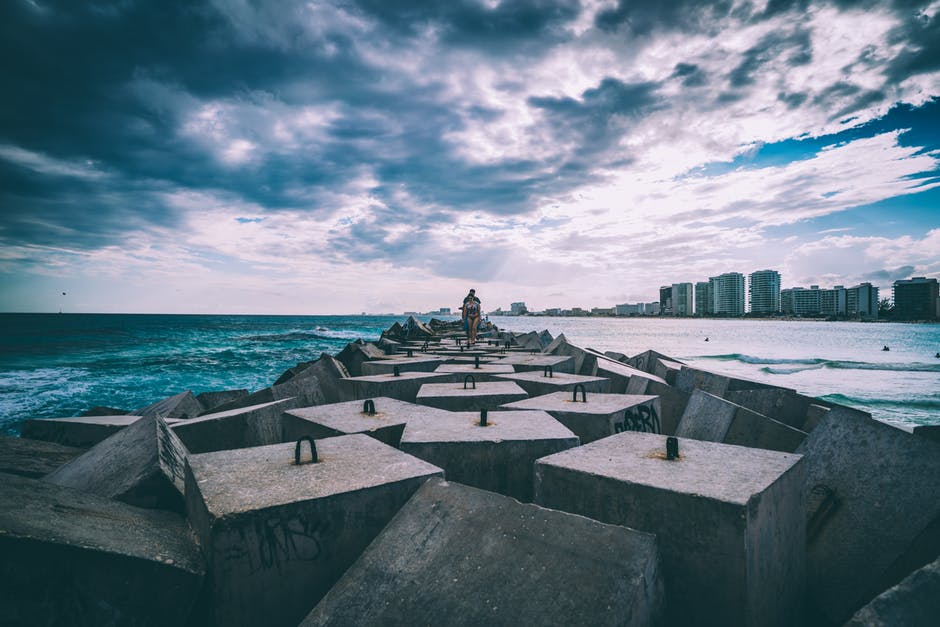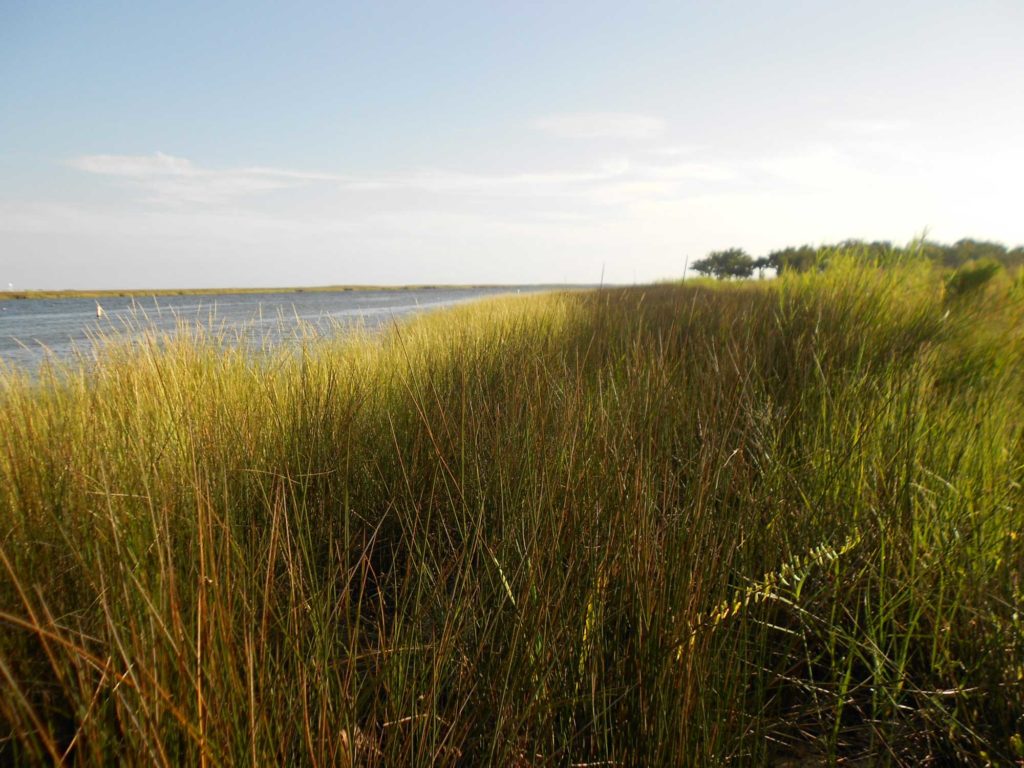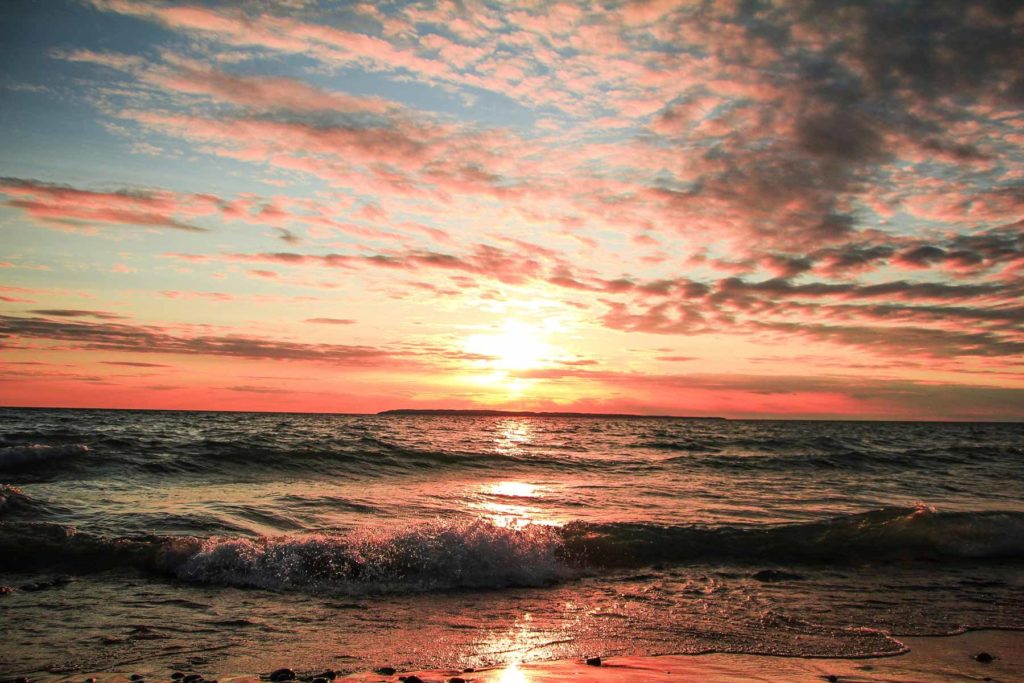There are few better property locations than on the shoreline but our love for a lake view can come with serious problems. Shoreline erosion is a natural process but construction and manmade landscape alterations accelerate it. You don’t have to sell up and move inland, but you do need to understand how to prevent shoreline erosion.
The erosion of shores happens in every location where a body of water meets the land. When developers remove vegetation to clear land, erosion can happen faster than usual. The key to preventing shoreline erosion is to understand why it happens and how to work with nature to stop it.
The last thing you want when you own a shoreline property is a dangerous lakeside or to watch your land recede. If you want to protect your home and enjoy the shoreline for many years to come, preventative action is essential. Protecting your land also protects the investment you have in your property.
Keep reading to find out what causes shoreline erosion and how you can prevent it.

What Causes Shoreline Erosion?
The movement of water causes shoreline erosion. You can see this in rivers that have carved their paths through erosion, some even creating oxbow lakes. Coastlines with high cliffs and bluffs are also places where erosion is usually easy to spot.
Erosion doesn’t only happen with crashing waves or a flowing river though, even the gentlest of movement causes erosion. With shoreline erosion in lakes, the lapping of water at the edges is still caused by waves. Any agitation of water creates wave action, even if it’s difficult to see.
Wind and movement in bodies of water amplify wave action which disturbs the soil at the shoreline. This has the continuous effect of whittling away at the edge.
Much of shoreline erosion occurs at the waterline and below. It cuts away at the earth and leaves overhanging edges. These edges are unstable and will eventually collapse. While a collapsing edge gives the impression that erosion happens quickly, the undercutting of the shoreline has most likely been happening for a long time, out of sight.
Why We Need to Prevent Shoreline Erosion
Shoreline properties are highly desirable and it’s a common area for development. During construction, it’s common to remove natural landscape like trees, vegetation, and rocks. As these help prevent erosion, their removal often causes erosion to speed up. Human intervention is an overwhelming culprit for increased shoreline erosion so it’s vital we take action to stop it.
Shoreline erosion eats away at usable land, making it unsafe. You don’t want to buy a lakeside property and discover it’s smaller ten years down the line than it was the day you purchased it. Erosion eats away at natural animal habitats too and can lead to flooding.
Ways to Prevent Shoreline Erosion
There are a variety of ways to prevent shoreline erosion but not all suit every area.
When assessing which method of shoreline erosion protection to use, you’ll need to take into account several factors. These include the typical wave action, the shoreline composition, and the desired results. You should also take into account the height of the shoreline as sloping shorelines have different needs to bluffs and cliffs.
Here are the most commons ways to prevent shoreline erosion.
Vegetation
Vegetation is usually a naturally occurring way of preventing shoreline erosion. Plants, from grass to trees, hold the shoreline soil in place using their root systems.
Marshes, mangroves, and many other types of wetland plants are found along shorelines too. They prevent soil erosion in a different way. While their roots do help the stability of the earth, they also act as baffles. As waves approach the shoreline, the plants break up the wave energy. By the time the wave reaches the shore itself, much of its energy has dissipated.
On shoreline where vegetation has been removed, re-planting suitable vegetation can be an effective way of preventing shoreline erosion. Preserving wetlands is also an important step for limiting shoreline erosion in the future.

Seawalls
In coastal areas, seawalls are sometimes used to prevent erosion. Seawalls are large structures built in the water to withstand the force of waves and stop them from reaching the shore.
While seawalls do prevent erosion from the area they’re protecting, they redirect wave energy. This can cause greater erosion in the vicinity of the protected area. Seawalls can also reflect wave action without loss of energy, resulting in a standing wave. This phenomenon (clapotic action) can cause severe damage to the seawall.
Sandbags
Often seen used in flood management situations, sandbags can be used to absorb wave energy and prevent erosion. Sandbags are a temporary measure though. They’re best used to manage an unfolding and short-lived event.
Sandbags aren’t a long term solution as they are vulnerable to degradation from the elements.
Rock Revetment
The best long term method of preventing shoreline erosion is by using rock revetment. You can see this method in nature.
On sloping rocky beaches and shorelines, erosion is slowed. As the waves hit the jumbled rocks and stones, the energy dissipates before it can reach loose material like soil and sand. Using rock revetment mimics this natural erosion protection, often on a larger scale.
You’ll have most likely seen rock revetment, otherwise known as rip-rap. It’s commonly spotted protecting beaches, yacht marinas, and other harbors. You can identify it by its large rocky blocks, unevenly placed. This rocky jumble breaks up the wave energy and absorbs it, where a flat surface would reflect that energy.
Rock revetment is the only long term solution that you can depend on when it comes to preventing shoreline erosion. Durable and effective, you can install rock revetment once and it needs very little maintenance. As it absorbs wave energy, it doesn’t redirect it or cause erosion in another location.
Preventing Shoreline Erosion in the Great Lakes
The Great Lakes are subject to constant erosion, particularly in built-up areas. While it’s a natural process, many existing properties and other buildings are at serious risk from continued erosion. You should take steps to protect your property as soon as possible.
There are laws and regulations governing construction along the shoreline of the Great Lakes to help prevent the acceleration of erosion. These regulations are also designed to keep future properties and residents safe from unstable shore areas. Property owners are generally responsible for their shoreline though. If you’re seeing erosion on your property boundaries, it’s vital you take preventative measures.
Retaining natural vegetation is a good idea for properties on the shores of the Great Lakes. Trees and shrubs can provide excellent stability for the earth. In places where vegetation has been removed, shoreline restoration is possible. This is where re-planting can take place, sometimes in conjunction with other preventions.
The Great Lakes are suffering catastrophic erosion in many areas. As a result, the Department of Environment Great Lakes and Energy is working to give erosion protection permits at a faster pace. Property owners on the Great Lakes are understandably worried. In cases of such immense erosion, shoreline erosion prevention is the only solution.

Rock Revetment in the Great Lakes
Rock revetment is the best shoreline erosion protection for the Great Lakes and is a long term solution. As the wave energy in the Great Lakes can be immense, erosion prevention needs to be durable and able to cope with Great Lakes conditions.
The Great Lakes also have their own currents, making each shoreline zone unique. In this way, rock revetments must be designed and implemented with your exact location in mind. Rock revetments are flexible in size and design, so can be built to cope with the environmental pressures applicable to the location.
Take Steps to Prevent Shoreline Erosion
Shoreline erosion isn’t something that we can stop altogether. As a natural process, erosion is part of shoreline living and of the evolution of geology. Yet, there are many instances where it’s speeding up, such as with lakeside construction.
To maintain safe properties on waterfronts, it’s important to understand how to prevent shoreline erosion as effectively as possible. In the Great Lakes, the best way to achieve this is by maintaining shoreline vegetation and building rock revetments to absorb wave energy.
As rock revetments are a long term solution that causes minimal disruption to the environment, they are by far the best choice for Great Lakes shoreline erosion prevention.
If you need an erosion assessment of your Great Lakes shoreline, get in touch with us today. We’ll make an assessment and recommendation based on your exact circumstances and needs. We offer an expert range of shoreline protection services including rock revetment construction, shoreline restoration, and dredging.
